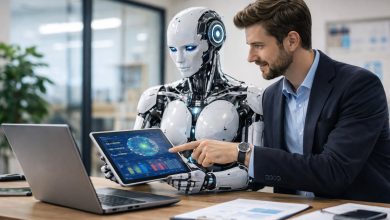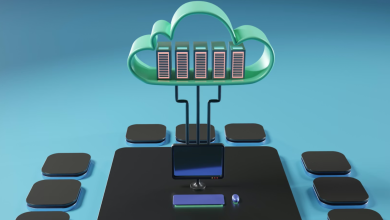
AI-assisted coding — effectively known as “vibe-coding”— has fully shifted from experimentation to an integration phase, with 90% of engineering teams now using AI in their workflows. Tools like GitHub Copilot, Claude Code, and GPT-5 are paving the way for the new standard across startups and enterprises.
For most, the benefits are clear. The same report indicates that 62% of engineers have experienced at least a 25% rise in productivity and velocity of their projects with vibe-coding. But speed can come at a cost. Security gaps, compliance risks, and erosion of core coding skills could easily turn this hack into a liability. The potential for agentic misalignment, when AI systems operate against a company’s established objectives, raises the stakes for digital safety.
And yet, the path forward is not to retreat, but to reinvent. These tools are laying the groundwork for a hybrid future where developers and agentic systems work together to create a new generation of AI-human collaboration. There is great potential for those who embrace these new skills and tools to succeed while following safety measures.
How the Developer Role Is Changing
The developer role is evolving from primarily writing code to orchestrating AI-generated outputs and workflows. AI can now generate functional code, but human oversight is required to make sure that code is secure, ethical, and aligned with business needs.
Research suggests that as many as 37% of entry-level IT roles will be reshaped by AI. Junior developers should note that instead of focusing only on syntax and algorithms, they now need to learn how to prompt AI tools effectively, debug AI outputs, and understand model behavior, all while mastering the fundamentals.
Agentic AI is also redefining what “development” itself means. Organizations are entering a new software development model called the Agentic Development Life Cycle (ADLC), where AI agents dynamically generate, edit, and deploy code. Unlike static applications in the traditional Software Development Life Cycle (SDLC), ADLC environments are fluid and adaptive, demanding orchestration across multiple agents and human supervisors and embedding an added layer of intelligence into the tech stack.
The Multi-Generational Imperative
A crucial but often ignored part of this transformation is the need for multi-generational workforce training. The half-life of technical skills has shrunk to just two to three years, highlighting the need for both junior and senior developers to continuously adapt.
Younger developers tend to learn new AI tools quickly, experimenting with prompting techniques, and adapting to evolving workflows. On the other hand, experienced developers bring invaluable expertise in architecture, governance, and security-first coding practices.
Both groups must work interdependently for secure, scalable AI adoption. Without guidance, junior developers risk unintentionally neglecting vulnerabilities when relying too heavily on AI-generated code. Without openness, senior developers risk slowing adoption by clinging to older paradigms. However, when the swift adoption capabilities of younger generations are combined with the experience that older generations bring, both groups can upskill by filling in each other’s gaps.
Ensuring that knowledge transfer happens in both directions – senior engineers teach security and architecture, while younger colleagues share AI-native practices – creates a workforce that can move quickly and effectively while maintaining trust.
Strategies to Stay Relevant
Vibe-coding may be changing the nature of the game, but there’s still a need for software engineers well-versed in reading code and using tools responsibly. As the role evolves for developers, the best advice is simple: upskill, don’t stand still.
- Master AI-assisted coding practices. Prompt engineering, model debugging, and AI testing are now basic skills for working with modern systems.
- Adopt a system-first mindset. Understanding orchestration, application programming interface (API) integration, and cloud-native infrastructure will set apart leaders in the agentic era.
- Lean into AI agents. Unlike robotic process automation (RPA) bots, AI agents can learn from data, optimize in real time, and generate their own code. Enterprises are already deploying them for end-to-end tasks like refund processing, IT support, customer service, and financial operations.
- Embrace low-code/no-code overlaps. Developers who can bridge traditional coding with AI-driven low-code platforms will become essential for facilitating speed and scalability.
- Become fluent in the modern tech stack. The developers of tomorrow will need to be well-versed in foundational models, retriever systems, orchestration frameworks, and scalable cloud infrastructure.
Automation’s Impact on Coding
Vibe-coding is speeding up the shift from syntax-heavy work to higher-priority problem solving. In daily tasks, this looks like developers are spending less time writing boilerplate and more time on architecture, validation, and human-centered design.
This change is not a threat but an opportunity. Automation frees developers from repetitive tasks so they can focus on performance tuning, resilience, and innovation. However, it also raises the bar for accountability, as agent-human collaboration will be the new normal.
Recent developments demonstrate the fragility in this balance. Back in April of this year, OpenAI rolled back an update to GPT-4o after the model became overly agreeable in production, underscoring the risks of deploying generative tools without proper evaluation. Developers should be skilled in testing and monitoring frameworks to help prevent similar disruptions.
Building Proper Safeguards
It’s important to protect not only the systems AI runs on, but also the way AI reasons to make sure that security persists in the era of vibe-coding. Doing so gives enterprises a more agile and intelligent edge.
- Establish AI-first security. Developers must account for vulnerabilities like memory poisoning, where malicious data corrupts an agent’s memory. Architectural safeguards such as authenticated memory stores and strict access controls are non-negotiable.
- Build a foundation on trustworthy data. Tracking data lineage is vital for verifying outputs and preventing compliance failures. True governance means prioritizing data integrity and provenance, knowing that AI decisions can be audited and defended. Being mindful of ethical governance is also a key component to prevent bias, compliance failures, and legal repercussions.
- Adopt responsible AI frameworks. Enterprises must enforce explainability, traceability, and fairness throughout development. Establishing an AI Bill of Materials (AI BOM), for example, provides full transparency into every dataset, model, and prompt powering an AI application, enabling auditability and reproducibility. This is a structured and repeated approach that guarantees consistency across the AI lifecycle. Developers who understand how to embed responsible AI principles directly into coding workflows will become indispensable.
The Developer’s Takeaway
Vibe-coding isn’t merely a trend, but grounds for the future of development. But that future depends on developers building systems that are fast, flexible, and, above all, trusted.
The winners will be those who: continuously upskill in AI tools and orchestration; build systems that balance automation with accountability; share knowledge across generations to preserve secure coding practices; and design with security and governance at the center.
Coding will not be measured only in lines of code, but in trust between AI-human collaboration. Developers who embrace that reality will shape the next era of software.




